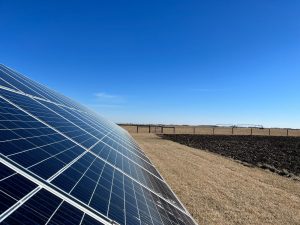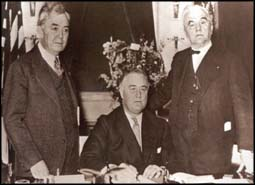Co-Authors: Amanda Pankau, Prairie Rivers Network, Christine Nannicelli, Sierra Club Illinois, and Scott Allen, Citizens Utility Board
The passage of the Inflation Reduction Act (IRA) has dramatically transformed the energy landscape for publicly owned electric cooperatives and municipal utilities across the country, offering game-changing access to clean energy tax credits and a suite of programs to deliver cost-effective clean energy resources to their customers. One of the most exciting programs is the Empowering Rural America (New ERA) Program. This program offers $9.7 billion in grants and low-cost loans — the largest investment in rural electrification since 1936, and an unprecedented opportunity to hasten the clean energy transition for rural electric cooperatives (rural co-ops).
This funding opportunity is particularly important for Illinois because our rural co-ops have long-term contracts and ownership shares with coal-fired power plants like the Prairie State Coal Plant. The energy futures for these cooperatives, their customers, and Illinois’ largest polluting power plant are at a crossroads. Prairie State owners could double down on their risky investment in coal by retrofitting Illinois’ largest polluter with carbon capture technology, effectively repeating history and burdening Illinois communities with another decade of dangerous soot pollution. Or, they could make a cost-effective shift to clean energy by capitalizing on the unprecedented incentives in the Inflation Reduction Act. Historically, Prairie State owners and rural co-ops avoid engaging the public and their ratepayers with transparent utility planning. This lack of transparency poses significant challenges to accessing information about benefits like the historic opportunities in the IRA. Now is the time to challenge the status quo and call on rural co-ops in Illinois to be leaders in the clean energy transition.

History of Rural Electric Cooperatives
By 1930, most of America’s urban areas had electricity, while 90% of farms were still without it. In 1936, as part of the New Deal, Congress passed the Rural Electrification Act, creating a lending program that allowed rural farmers and citizens to form non-profit cooperatives to bring electricity to rural America. With the power of the people, rural co-ops quickly got to work, and within a few decades, the lights were on throughout much of rural America. Rural co-ops operate according to the Seven Cooperative Principles that ensure members’ needs are put first through open membership, democratic control, and more. Today, rural co-ops continue to generate and deliver power to rural homes and farms, and they have become an integral component of rural economies and communities.

President Franklin Delano Roosevelt (center) signs the Rural Electrification Act with Representative John Rankin (left) and Senator George William Norris (right). Source: USDA
Historic Opportunity
The New ERA represents the largest single investment in rural electrification since the passage of the Rural Electrification Act in 1936. The funds can be leveraged alongside other state incentives, as well as federal tax credits, that rural co-ops can access through the new “direct pay” option. Rural co-ops interested in applying for funding must submit “letters of interest” (LOI) detailing their funding requests by August 31, 2023. The US Department of Agriculture (USDA) will evaluate and score the LOIs based on the potential for emissions reductions and send invitations to submit full applications to the top-ranking LOIs.
Through this historic program, rural co-ops can and must become leaders in building clean energy systems that will bring reliable, low-cost power to their owner-members. If you get your power from a rural co-op, you are a member and an owner of that rural co-op. As a member-owner, you have a say in the co-op’s clean energy transition.
Here’s how you can raise your voice and call for clean energy:
The power of rural people brought electricity to their homes and businesses just under 100 years ago. Today, we must harness that power for a new type of energy transformation. Learn more about your co-op’s power supply and about the New ERA Program, and then reach out to your rural co-op! Remember, it is literally YOURS!
- Explore your co-op’s current energy sources, as well as possible clean energy replacement opportunities, with this mapping tool: “Electric Cooperative Explorer.” Note that the “Delivery Co-op” that you get your electricity bill from is part of a larger “Generation and Transmission Co-op” (G&T Co-op). This mapping tool looks at the energy sources of the G&T Co-ops.
- Learn more about the Empowering Rural America (New ERA) Program using the following resources:
- Contact your Co-op Board Members and staff and ask them to set clean energy goals, create a plan to reach those goals, and apply for New ERA program money. Feel free to utilize this example email to urge your Co-op Board to set clean energy goals!

